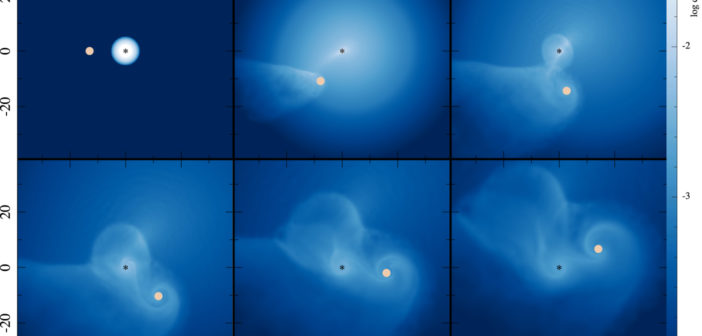These stills from a simulation show the evolution (from left to right and top to bottom) of a high-mass X-ray binary over 1.1 days, starting after the star on the right fails to explode as a supernova and then collapses into a black hole. Many high-mass X-ray binaries — like the well-known Cygnus X-1, the first source widely accepted to be a black hole — host rapidly spinning black holes. Despite our observations of these systems, however, we’re still not sure how these objects end up with such high rotation speeds. Using simulations like that shown above, a team of scientists led by Aldo Batta (UC Santa Cruz) has demonstrated how a failed supernova explosion can result in such a rapidly spinning black hole. The authors’ work shows that in a binary where one star attempts to explode as a supernova and fails — it doesn’t succeed in unbinding the star — the large amount of fallback material can interact with the companion star and then accrete onto the black hole, spinning it up in the process. You can read more about the authors’ simulations and conclusions in the paper below.
Citation
Aldo Batta et al 2017 ApJL 846 L15. doi:10.3847/2041-8213/aa8506

